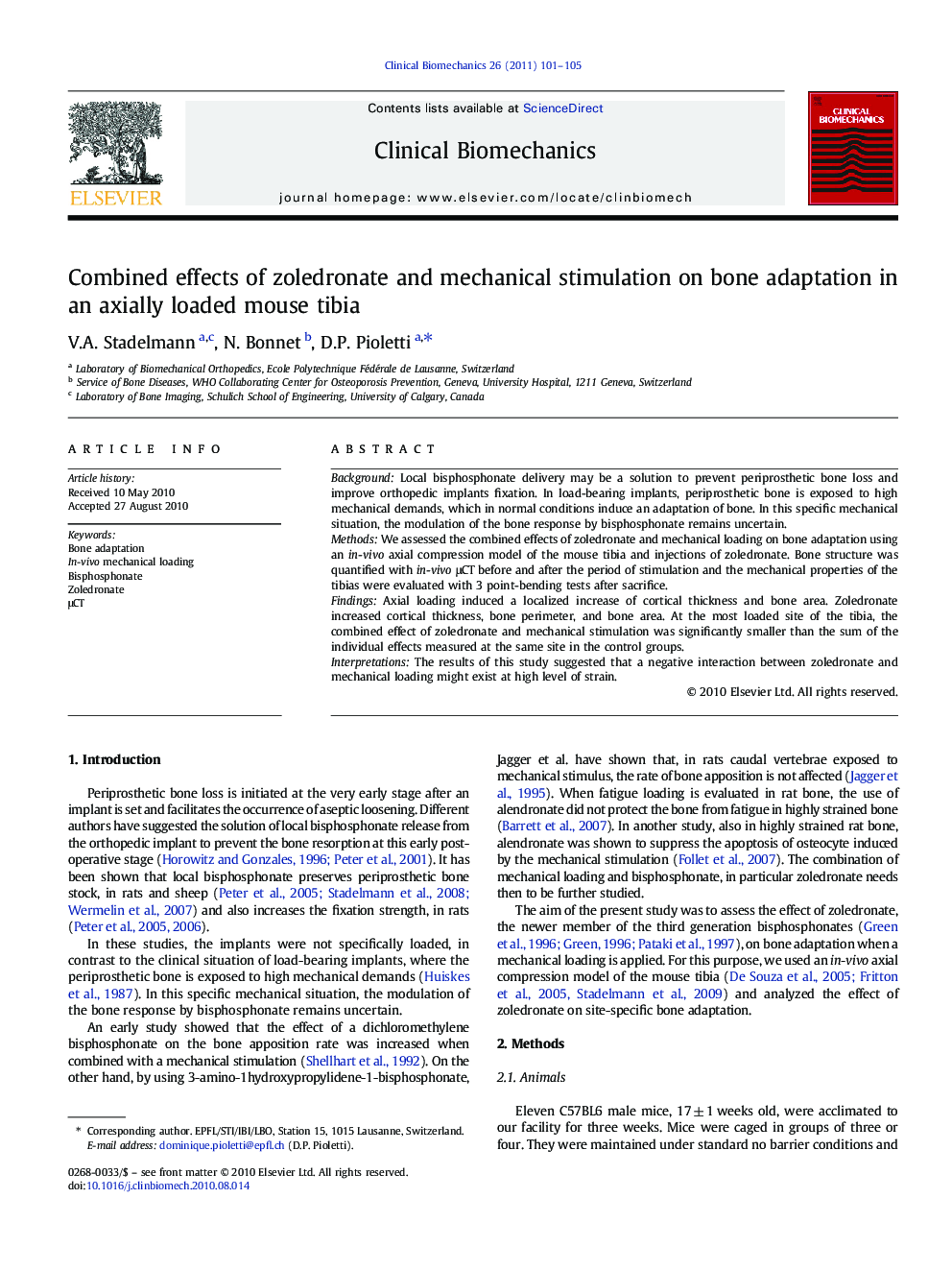| Article ID | Journal | Published Year | Pages | File Type |
|---|---|---|---|---|
| 4051013 | Clinical Biomechanics | 2011 | 5 Pages |
BackgroundLocal bisphosphonate delivery may be a solution to prevent periprosthetic bone loss and improve orthopedic implants fixation. In load-bearing implants, periprosthetic bone is exposed to high mechanical demands, which in normal conditions induce an adaptation of bone. In this specific mechanical situation, the modulation of the bone response by bisphosphonate remains uncertain.MethodsWe assessed the combined effects of zoledronate and mechanical loading on bone adaptation using an in-vivo axial compression model of the mouse tibia and injections of zoledronate. Bone structure was quantified with in-vivo μCT before and after the period of stimulation and the mechanical properties of the tibias were evaluated with 3 point-bending tests after sacrifice.FindingsAxial loading induced a localized increase of cortical thickness and bone area. Zoledronate increased cortical thickness, bone perimeter, and bone area. At the most loaded site of the tibia, the combined effect of zoledronate and mechanical stimulation was significantly smaller than the sum of the individual effects measured at the same site in the control groups.InterpretationsThe results of this study suggested that a negative interaction between zoledronate and mechanical loading might exist at high level of strain.
